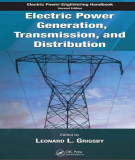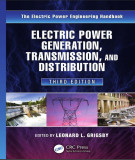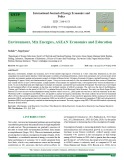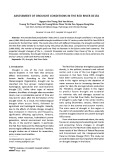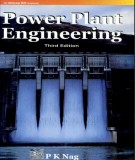
Hydroelectric power generation
-
Part 1 book "Electric power engineering handbook" includes content: Wind power, advanced energy technologies; photovoltaics, hydroelectric power generation; synchronous machinery; thermal generating plants; distributed utilities, concept of energy transmission and distribution; transmission line structures; insulators and accessories; transmission line construction and maintenance wilford caulkins and kristine buchholz,... and other contents.
 265p
265p  dianmotminh01
dianmotminh01
 20-05-2024
20-05-2024
 8
8
 3
3
 Download
Download
-
Part 1 book "Electric power generation, transmission and distribution" includes content: Wind power, photovoltaic fundamentals, advanced energy technologies, water part II - electric power generation - conventional methods; hydroelectric power generation, synchronous machinery, thermal generating plants; distributed utilities; concept of energy transmission and distribution; transmission line structures; insulators and accessories; transmission line construction and maintenance,... and other contents.
 413p
413p  dianmotminh01
dianmotminh01
 20-05-2024
20-05-2024
 5
5
 4
4
 Download
Download
-
The study uses the data of the Philippines, Vietnam, and Thailand over the period of 1995-2017 as gathered from the World Bank and Global Economy. The study uses Brush Pagon LM and Pearson CD to test the cross-section dependence among variables while Levin et al., (2002) panel unit root test to check the stationary in the data. Westerlund (2007) cointegration and FMOLS tests are applied to analyze the long-run relationship.
 8p
8p  nguaconbaynhay10
nguaconbaynhay10
 22-02-2021
22-02-2021
 12
12
 4
4
 Download
Download
-
One of the biggest inventions of human in the history is electricity. Coal, natural gas, uranium, tides, wind, and solar are resources for the generation of electricity. Hydropower first became the source of electricity back in the late nineteenth century. Water is the source of hydroelectric power which explains hydropower plants locations. Water volume and change in elevation from one to another point generate energy from the moving of water. More water flow and great elevation, more electricity (U.S. Energy Information Administration, 2020).
 7p
7p  hoanghung9393
hoanghung9393
 28-08-2020
28-08-2020
 16
16
 3
3
 Download
Download
-
The standardized precipitation index (SPI) is used to analyse drought conditions in the past 54 years (1961-2014) and to assess possible drought conditions in the 21st century under the RCP4.5 and RCP8.5 scenarios for the Red River Delta. The results show that with different timescales, the drought conditions of the Red River Delta tended to increase during the period of 1961-2014.
 8p
8p  vithomasedison2711
vithomasedison2711
 20-08-2019
20-08-2019
 8
8
 0
0
 Download
Download
-
(bq) part 2 book "power plant engineering" has contents: steam turbines, condenser, feed water and circulating water systems, nuclear power plants, hydroelectric power plant, diesel engine and gas turbines power plants, energy storage, non conventional power generation, environmental degradation and use of renewable energy.
 549p
549p  bautroibinhyen20
bautroibinhyen20
 06-03-2017
06-03-2017
 44
44
 4
4
 Download
Download
-
2.1 Hydroelectric Power Generation Steven R. Brockschink, James H. Gurney, and Douglas B. Seely 2.2 Syncrhonous Machinery Paul I. Nippes 2.3 Thermal Generating Plants Kenneth H. Sebra 2.4 Distributed Utilities John R. Kennedy
 37p
37p  kien06121986
kien06121986
 24-12-2012
24-12-2012
 86
86
 6
6
 Download
Download
-
Renewable Energy is energy generated from natural resources - such as sunlight, wind, rain, tides and geothermal heat - which are naturally replenished. In 2008, about 18% of global final energy consumption came from renewables, with 13% coming from traditional biomass, such as wood burning. Hydroelectricity was the next largest renewable source, providing 3% (15% of global electricity generation), followed by solar hot water/heating, which contributed with 1.3%. Modern technologies, such as geothermal energy, wind power, solar power, and ocean energy together provided some 0.
 0p
0p  kimngan_1
kimngan_1
 05-11-2012
05-11-2012
 134
134
 21
21
 Download
Download
-
A synchronous machine is an ac rotating machine whose speed under steady state condition is proportional to the frequency of the current in its armature. The magnetic field created by the armature currents rotates at the same speed as that created by the field current on the rotor, which is rotating at the synchronous speed, and a steady torque results. Synchronous machines are commonly used as generators especially for large power systems, such as turbine generators and hydroelectric generators in the grid power supply. ...
 31p
31p  bk20062011
bk20062011
 21-02-2011
21-02-2011
 65
65
 3
3
 Download
Download
CHỦ ĐỀ BẠN MUỐN TÌM









